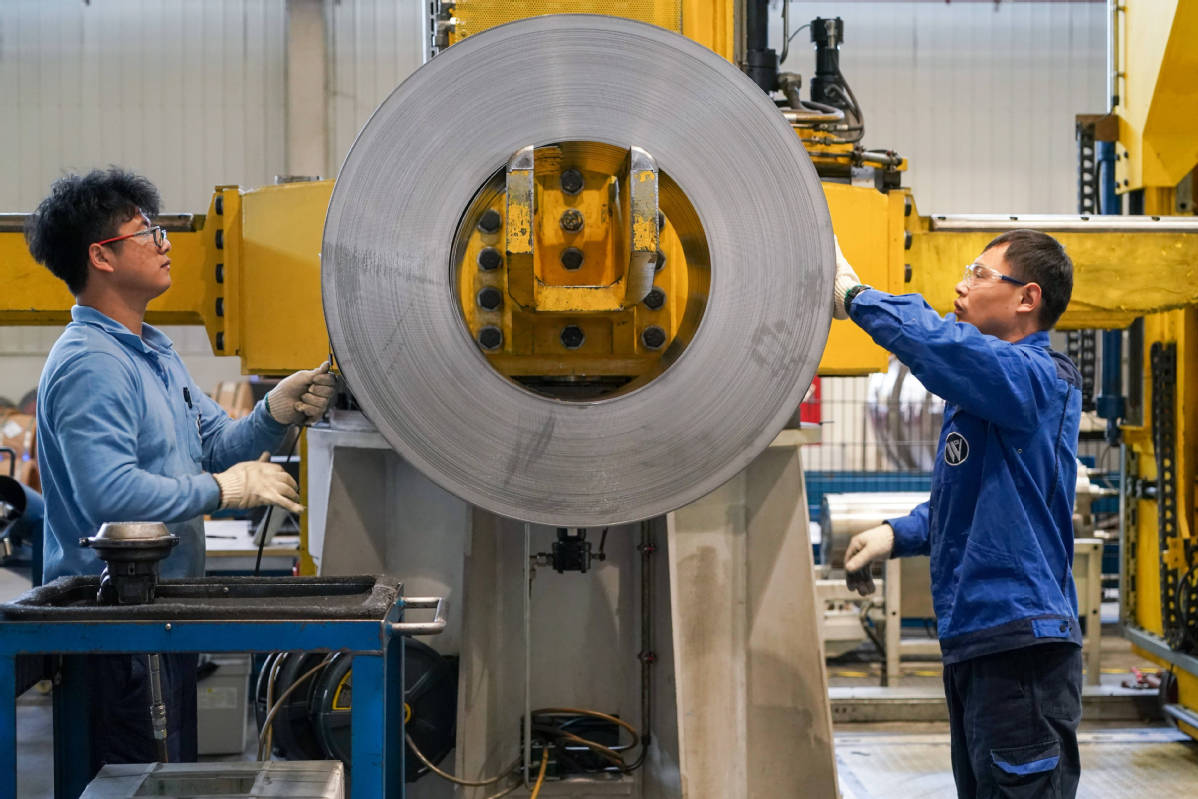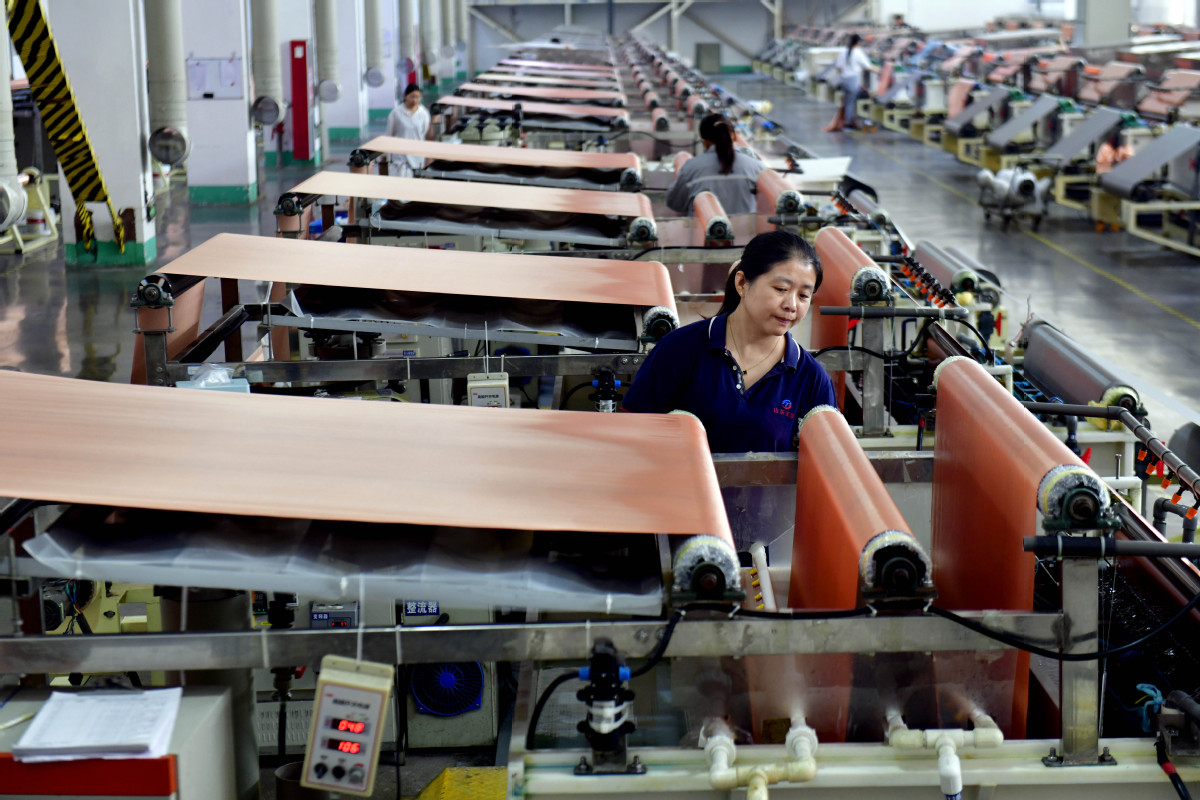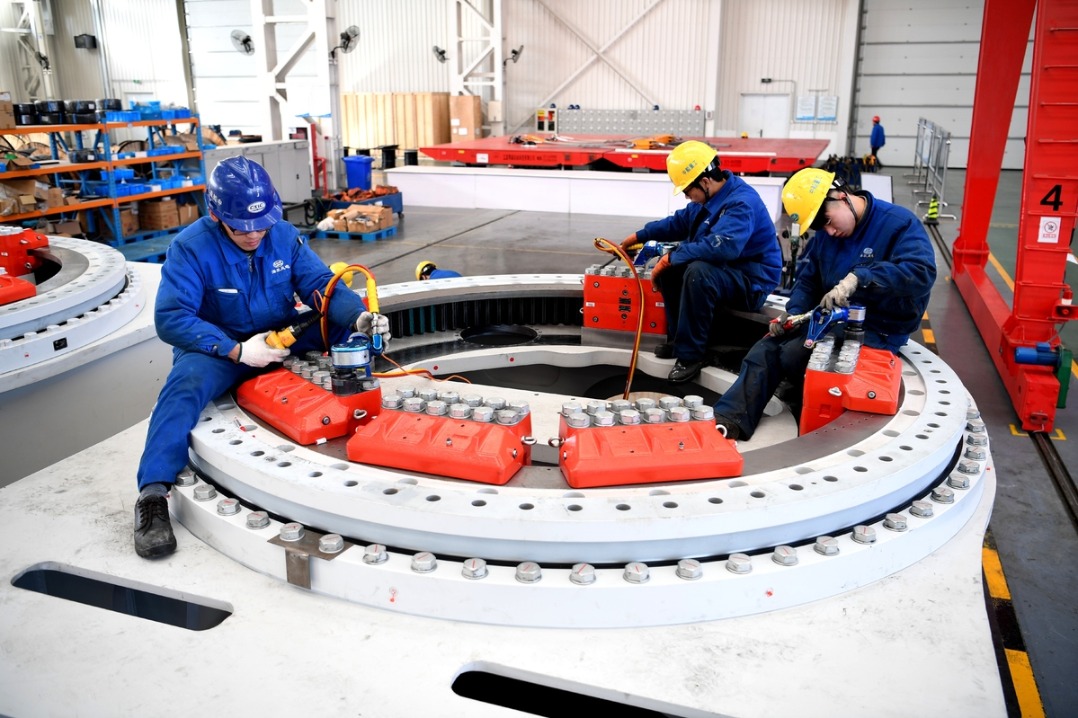New materials forge ahead with innovation
Limestone, other affordable resources contributing to more sustainable, greener growth across country


BEIJING — Limestone, plentiful in the Earth's crust, has been transformed into an innovative nanomaterial commodity in North China to support a diverse array of sectors with lower carbon emissions.
Stone Age New Material Technology Co Ltd in Liulin county, North China's Shanxi province, has managed to use limestone as a raw material to produce a special nano calcium carbonate and composite titanium dioxide through advanced processing technology.
The new material can be broadly used in industries such as rubber production and papermaking, replacing expensive carbon black, titanium dioxide and glass fiber, all of which consume a lot of energy and pollute heavily.
The new materials industry is listed as one of the strategic industries in the resolution on further deepening reform to advance Chinese modernization, which was recently adopted at the third plenary session of the 20th Central Committee of the Communist Party of China.
Deemed as a promising new quality productive force, the new materials industry serves as a cornerstone for the equipment and manufacturing sectors, which are essential to driving the country's economic growth.

Industrial upgrade
The rich limestone resources were previously solely used to produce low value-added bulk building materials like building stones, high calcium ash and cement clinker, resulting in a great waste of resources, said Zhang Pengyun, deputy general manager of Stone Age.
The transition is inevitable given the new circumstances. "With the slowdown in the real estate sector, the supply of stone materials has gradually outstripped demand, compelling many quarries to scale back their operations. Our own quarry, for instance, had once functioned at merely half of its potential capacity," Zhang said.
In April 2019, his company collaborated with the Chinese Academy of Sciences' Institute of Process Engineering to set up a laboratory. However, it wasn't until early this year that they successfully transformed the lab's innovations into market-ready products for mass production, with an investment of hundreds of millions of yuan.
The innovation is paying off handsomely. One metric ton of high-calcium ash is sold for less than 400 yuan ($56), whereas new materials including nano-calcium carbonate can cost 4,000 yuan a ton now, Zhang said.
Shanxi, which is highly reliant on coal mining for regional economic development, has made great efforts to transform its industries into green and low-carbon enterprises. It has implemented policies to support the high-quality development of the new materials industry.
The province has initially created an industrial system integrating advanced metal materials, carbon-based new materials, novel inorganic nonmetallic materials, bio-based new materials and other cutting-edge new materials.
There were 287 major new materials enterprises as of the end of 2023 in Shanxi, with a total revenue of 240 billion yuan, according to the provincial department of industry and information technology.
Unleashing vitality
The country will be committed to consolidating the principal position of enterprises in sci-tech innovation and establishing a mechanism to cultivate and strengthen leading tech enterprises, according to the newly adopted resolution.
By 2023, corporate-led patents accounted for over 70 percent of all valid domestic patents in China, ahead of academic and research institutions.
China National Building Material Group Co Ltd, the world's largest comprehensive building materials industry group, has added 307 core invention patents over the past two years, and successfully tackled a number of "bottleneck" technologies such as carbon fiber composites for large aircraft, large-size infrared optical materials and highly efficient power generation glass.
Between 2016 and 2023, the group's annual average research and development investment reached more than 10 billion yuan, with a compound growth rate of 12.3 percent.
It developed and produced silicon nitride ceramic spheres by pressing high-purity silicon nitride powder into green-ware and forging at a high pressure of 2,000 atmospheres and a high temperature of 2,000 C.
The silicon nitride ceramic spheres, with a hardness only behind diamonds and a weight 40 percent of the same volume of steel, have been widely applied in space flight engines, lunar rovers, wind turbines and electric cars, said Sun Feng, general manager of Sinoma Advanced Nitride Ceramics Co Ltd, a CNBM division.
Meanwhile, collaborative strides made between sci-tech institutions and enterprises in new materials development and applications have been moving ahead, with a view to promoting integrated advancements in technological and industrial innovation.
Currently, nearly 100 institutes under the CAS are carrying out R&D or promoting the application of new materials.
The Ningbo Institute of Materials Technology and Engineering of the CAS has cooperated with more than 1,500 domestic enterprises and over 250 foreign institutions to realize the transformation of 93 major sci-tech achievements, such as large-size single crystal diamonds, amorphous soft magnetic strips, 3D-printed air rudders, elastic electronic sensing devices and intelligent robots.
In the fields of carrier equipment, information display, energy and power and healthcare, there is a significant and growing demand for the development and application of new materials, said Wang Liping, head of the NIMTE.
"The transformation of sci-tech achievements is an important bridge connecting research and production, as well as a core step to empower industrial innovation by technical innovation," said Zhou Yuxian, chairman of CNBM.
Xinhua




































